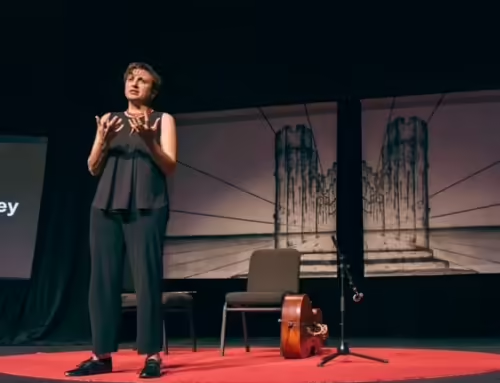Holding Boundaries.
Giving feedback.
Redirecting.
Correcting.
Saying No.
How do you feel about these skills? What reaction does your body have when you think of them?
These are critical moments for leaders. If our project isn’t going where we want it to, or others are not on board, we need to speak up to get things back on track.
Growing up, I didn’t see frequent examples of adults saying no, expressing dissatisfaction, or drawing boundaries around their time.
The few times my mom got loud and angry, we had to keep from giggling since we were so surprised and unfamiliar with her angry voice. (It was not the effect she wanted, I’m sure!)
Saying “no” is not my sharpest-honed tool. I’ve had to observe others, practice, read theory, and get uncomfortable. Yes, I’ve talked with therapists and coaches, but beyond any underlying emotional baggage or unhelpful hidden stories, I see that saying no is simply something I need to practice.
In other words, saying “No” is a skill.
Last week, I observed a master of this skill.
A client of mine, let’s call him Victor, was feeling stuck. Over the previous years, we had built his speaking confidence, prepared his ideas to deliver impactful meetings and presentations, and helped him clarify his personal values and speakership purpose. He moved from turning down speaking opportunities to getting excited to share his ideas and receiving accolades.
Now, Victor and his team were at a pressure point. They realized they were working at an unsustainable pace and were unclear on how to resolve it. They wanted to grow, but the thought of stretching themselves further brought a cold sweat to their faces. Victor needed clarity about where and how to lead his close-knit, high-achieving team and how to strategically communicate that plan up and down the organization.
I introduced him to a team strategy expert, let’s call her Lisa, and we set up some meetings for the three of us to explore working together.
During our second exploratory conversation, Victor’s body language indicated things were not going well. His eyebrows furrowed. His shoulders froze. He stopped meeting our gaze. I could also see Lisa not yet slowing down to check in.
I started thinking about what to say to keep things from continuing sideways. How do I interrupt? Who do I direct my words towards? How do I not step on toes?
Before I could formulate one sentence, Victor broke his own freeze and interrupted Lisa to say, “I told you last time we met what I needed, and I don’t see how what you’re saying is leading us there.”
The speed of Victor’s words stunned me—the clarity, velocity, and reaction time! I felt humbled and in awe of his skill. In those quick words, I could sense the years of practice in redirection, drawing boundaries, and saying “no.” It felt like I was looking at a professional basketball player sinking a three-pointer without the ball touching the rim. Nothing but net.
Lisa responded immediately with her own masterful word skills. She slowed down, asked questions, and lobbed her own nothing-but-net “no” back, working with Victor until they both saw how she had heard his need and highlighted how her plan could bring him and his team to the clarity and unity they were looking for.
I was awed by these two masterful communication navigators clarifying, holding boundaries, and saying “no.”
Often, we think of leaders as individuals who say yes, who find efficient ways to get things done, and who can accomplish a lot in a given timeframe. What we don’t realize, however, is that the most valued leaders are such, not because they’re “yes people,” but because they’re selective about when they say “yes.”
They prioritize their yeses to feel confident in their no
In an article from Harvard Business Review, author Bruce Tulgan discusses the importance of saying no as a critical skill for effective leadership. “You can’t say yes to everyone and everything and do all of it well,” he states. “When you take on too many or the wrong things, you waste time, energy, and money and distract yourself from what’s really important.”
The art of saying no falls under a larger umbrella of leadership skills related to decision-making. It’s not just about saying no literally but also about redirecting, offering constructive feedback, and setting boundaries.
Victor set a boundary. His priority was his team’s health and growth, and he wasn’t going to invest in something that didn’t help them all, no matter how fancy Lisa’s consulting credentials or how impressive her roster of former clients. He set his boundary with direct feedback: “I don’t see how what you are saying is leading us there.” He then gave Lisa space and time to focus on the missing information he needed.
From the Harvard Business School article, Tulgan states, “The only way to be sustainably successful, is to get really good at saying no in a way that makes people feel respected and to say yes only when your reasoning is sound and you have a clear plan of attack.”
In the case of Victor and Lisa, Victor interrupted Lisa to hold himself and Lisa accountable for their shared goal. His words were direct, respectful, and absolutely necessary. Had he simply nodded along and agreed with Lisa’s recommendations, he would have been doing both of them a disservice, given that Lisa was not on the right path to achieving his desired results.
So how do you determine when to say no?
According to Tulgan, “A good no is all about timing and logic. You should say no to things that are not allowed, cannot be done, or that, on balance, should not be done.”
He refers to these guidelines as the “no gates,” describing them as a concept he borrowed “from a project management technique called stage-gate reviews, which divide initiatives into distinct phases and then subject each to a ‘go, no go’ decision.”
His three-part framework for evaluating requests suggests that leaders assess the ask, deliver a well-reasoned no, and give a yes that sets them up for success.
I can see the logic of these steps, but I will reframe them in my own wording.
- Ask for a moment to think, breathe, and connect with the outcome that matches your vision and values.
- Repeat the request with any additional questions so you both settle in a shared understanding of the situation.
- If the answer is no, redirect the requester’s energy towards what can work. “What you’re asking isn’t possible, but here’s what is…”
One complicating factor is that humans worldwide are hesitant to say no. Sometimes, we get caught up in worries of disappointing colleagues or missing out on opportunities, but linguistically and culturally, saying no is hard. In her TEDxBoulder talk, Liz Marasco shares how we avoid saying a direct no at all costs. “The basic goal of human interaction is affiliation. We want to feel like we’re on the same page with our partner at all times. “No” is an indication that everything has gone wrong.”
Yes, looking someone in the eye and saying “No,” full stop, goes against our brain wiring to affiliate and connect with others. But like Victor above, we can confidently redirect the conversation. There isn’t a single “no” in there, but we all understood the verbal stop sign. Victor had practiced and had phrases in his pocket to use quickly when a conversation needed redirection.
- I don’t see how what you’re offering is leading us where we need to go.
- In order to reach our goals of budget and scope, we are going in a different direction.
- I hear what you are asking, but I see it differently. Would you like some additional information about that?
So, as we develop our leadership skills, let’s remember that while saying yes to everything may be the easiest route in the short term, doing so will inevitably lead to failure in the long term. Decision-making is about doing the right thing at the right time with the resources you have available.
“Every good no makes room for a better yes—one that adds value, builds relationships, and enhances your reputation,” states Tulgan. “It’s aligned with the mission, values, priorities, ground rules, and marching orders from above. It’s for something that you can do, ideally well, fast, and with confidence.” Saying no is the real skill.
So, start saying yes to saying no.






